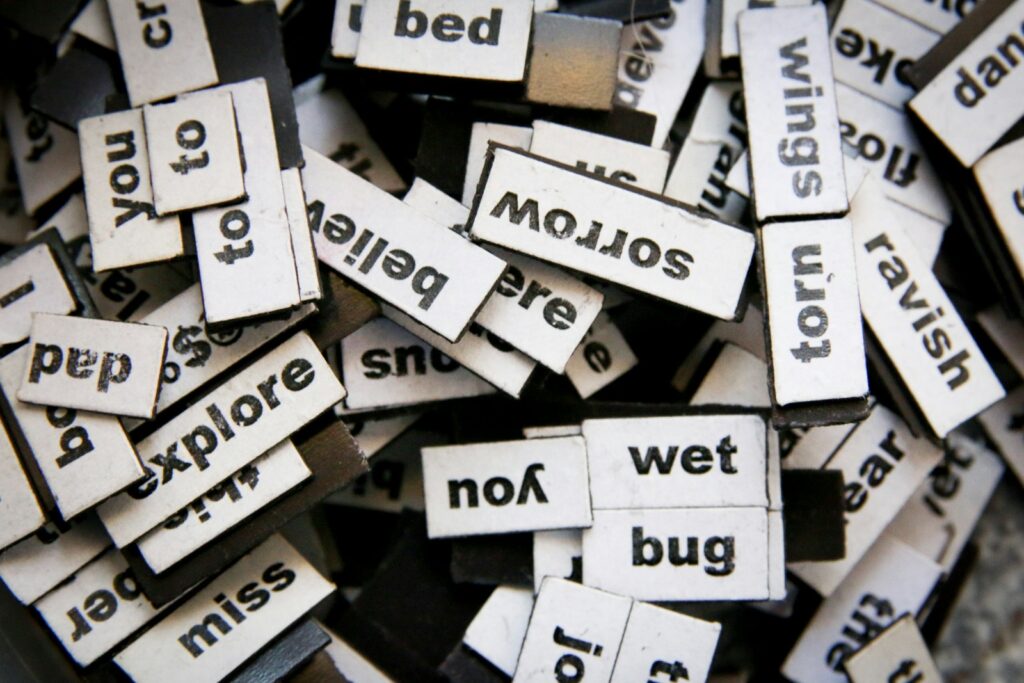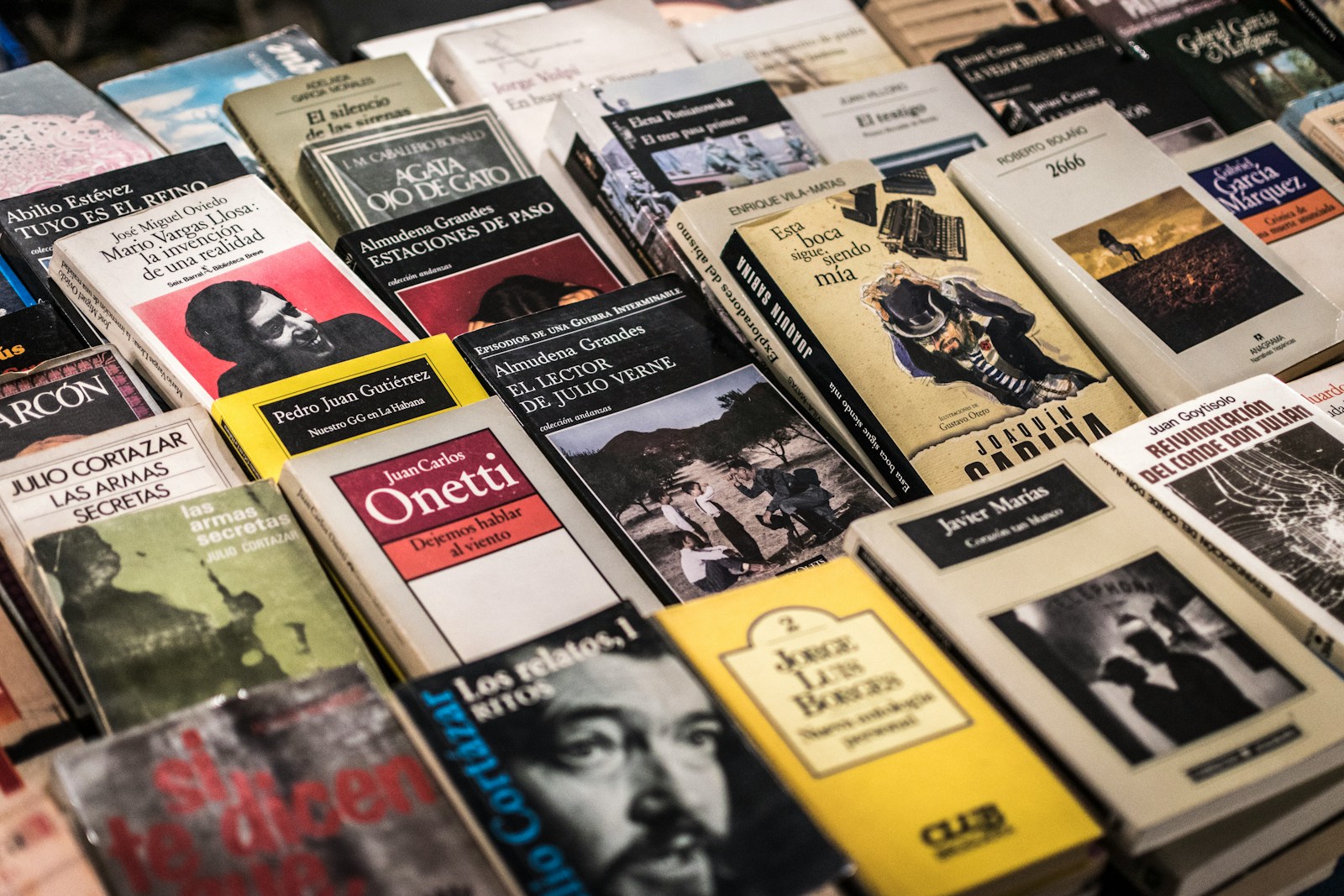When it comes to writing a novel, one of the most common questions aspiring authors ask is, “How many words should my novel be?” The answer isn’t as straightforward as you might think.
The ideal word count for a novel depends on several factors, including the genre, target audience, and publishing goals. In this blog, we’ll explore the typical word counts for different types of novels, why word count matters, and how to determine the right length for your story.

Why Does Word Count Matter?
Before diving into specific numbers, it’s important to understand why word count is such a big deal in the publishing world. Here are a few reasons:
- Reader Expectations: Readers of certain genres have expectations about how long a book should be. For example, fantasy readers often expect epic, detailed stories, while romance readers might prefer shorter, more concise narratives.
- Publishing Standards: Literary agents and publishers often have strict guidelines for word counts. Submitting a manuscript that’s too long or too short can result in instant rejection, as it may signal that the author is unfamiliar with industry standards.
- Story Structure: Word count can influence the pacing and depth of your story. A novel that’s too short might feel underdeveloped, while one that’s too long could drag on and lose the reader’s interest.
- Marketability: Books that fall within the expected word count range are easier to market and sell. Publishers are more likely to take on a project that fits neatly into a genre’s standards.
Word Count by Genre
The ideal word count for a novel varies widely depending on the genre. Here’s a breakdown of the most common genres and their typical word counts:

1. General Fiction
- Word Count: 70,000–100,000 words
- Examples: Literary fiction, contemporary fiction, and mainstream fiction often fall within this range. These novels focus on character development and storytelling rather than complex world-building.
2. Science Fiction and Fantasy
- Word Count: 90,000–120,000 words (or more)
- Examples: Epic fantasy and hard sci-fi novels often require more words to build intricate worlds, develop complex magic systems, and introduce large casts of characters. However, debut authors should aim for the lower end of this range to avoid overwhelming readers.
3. Mystery and Thriller
- Word Count: 70,000–90,000 words
- Examples: Fast-paced and plot-driven, these genres benefit from tighter word counts to maintain suspense and keep readers engaged.
4. Romance
- Word Count: 50,000–90,000 words
- Examples: Romance novels tend to be shorter, with category romances (like Harlequin) often falling on the lower end of the spectrum. However, historical or paranormal romances might be longer.
5. Young Adult (YA)
- Word Count: 50,000–80,000 words
- Examples: YA novels are typically shorter to cater to younger readers’ attention spans. However, YA fantasy or sci-fi might stretch to 90,000 words.
6. Middle Grade (MG)
- Word Count: 25,000–50,000 words
- Examples: Middle-grade novels are even shorter, as they’re aimed at readers aged 8–12. The focus is on simplicity and accessibility.
7. Historical Fiction
- Word Count: 80,000–120,000 words
- Examples: Historical fiction often requires more words to accurately depict the time period, setting, and cultural context.
8. Non-Fiction
- Word Count: 50,000–100,000 words
- Examples: Memoirs, self-help books, and other non-fiction works vary widely in length depending on the subject matter and target audience.
Word Count for Debut Authors
If you’re a first-time author, it’s especially important to stick to the lower end of the word count range for your genre. Literary agents and publishers are often hesitant to take a chance on a lengthy manuscript from an unknown writer. A shorter, well-polished novel is more likely to catch their attention.

How to Determine the Right Word Count for Your Novel
While genre guidelines are helpful, your story’s needs should ultimately dictate its length. Here are some tips for determining the right word count:
- Outline Your Story: Create a detailed outline to estimate how many words each section of your novel will require. This can help you avoid overwriting or underwriting.
- Study Comparable Books: Look at recently published novels in your genre to get a sense of their word counts. This will give you a realistic benchmark.
- Focus on Pacing: Ensure your story flows smoothly. If it feels rushed, you might need to add more words. If it drags, consider cutting unnecessary scenes.
- Edit Ruthlessly: After completing your first draft, revise and trim any excess. Most novels can benefit from tightening.
- Consider Your Audience: Think about your target readers and their preferences. For example, younger readers might prefer shorter books, while avid fantasy fans might enjoy longer, more detailed stories.
What Happens If Your Novel Is Too Long or Too Short?
- Too Long: If your manuscript exceeds the expected word count, consider splitting it into multiple books or cutting subplots and unnecessary scenes. Overly long novels can be harder to sell and more expensive to produce.
- Too Short: If your novel is too short, you might need to expand on character development, subplots, or world-building. However, some genres (like novellas or short stories) thrive on brevity, so it’s not always a bad thing.



Final Thoughts
While word count is an important consideration, it shouldn’t stifle your creativity. The most important thing is to tell a compelling story that resonates with readers. Once you’ve written your novel, you can always revise and adjust the length to fit industry standards.

Remember, every great novel started as a rough draft. Focus on getting your story down on paper first, and worry about word count during the editing process. Happy writing!
TL;DR: The ideal word count for a novel depends on its genre and target audience. Most novels fall between 70,000 and 100,000 words, but this can vary widely. Always prioritize storytelling over strict word counts, but keep industry standards in mind if you’re pursuing traditional publishing.
How Many Words Are in a Novel?
The word count of a novel depends on its genre, target audience, and narrative complexity. While there is no strict rule, understanding general expectations can guide writers in crafting their stories. Below is a detailed breakdown of novel word counts by category.
General Guidelines
- A novel typically ranges from 40,000 to 140,000 words, with most falling between 70,000 and 100,000 words.
- The minimum threshold for a novel is 40,000 words, though shorter works may be classified as novellas.
- On average, novels are around 85,000 words, but this varies significantly by genre and publisher expectations
Word Counts by Genre
Fantasy & Science Fiction
- Range: 80,000–115,000 words
- These genres often require extensive world-building, which increases word count.
- Examples:
- Ender’s Game by Orson Scott Card: 100,609 words
- Harry Potter and the Prisoner of Azkaban by J.K. Rowling: 106,821 words
Mystery & Thriller
- Range: 70,000–100,000 words
- Focused on fast-paced narratives and suspenseful plots.
- Examples:
- Shutter Island by Dennis Lehane: 81,666 words
- The Girl on the Train by Paula Hawkins: 101,704 words
Literary Fiction
- Range: 60,000–100,000 words
- Emphasizes character development and thematic depth.
- Examples:
- The Unbearable Lightness of Being by Milan Kundera: 85,199 words
- Life of Pi by Yann Martel: 98,783 words
Romance
- Range: 40,000–100,000 words
- Sub-genres like regency or paranormal romances may have lower thresholds.
- Examples:
- The Choice by Nicholas Sparks: 79,950 words
- Sense and Sensibility by Jane Austen: 119,394 words
Horror
- Range: 70,000–100,000 words
- Relies on building psychological tension and vivid descriptions.
- Examples:
- The Haunting of Hill House by Shirley Jackson: 66,691 words
- Bird Box by Josh Malerman: 78,608 words
Young Adult (YA)
- Range: 50,000–80,000 words
- YA novels cater to teenage readers with engaging and relatable stories.
- Examples:
- The Perks of Being a Wallflower by Stephen Chbosky: 60,438 words
- Eleanor & Park by Rainbow Rowell: 78,179 words
Shorter Works
For writers exploring shorter formats:
- Short Story: Under 7,500 words
- Novelette: 7,500–17,500 words
- Novella: 17,500–40,000 words
Why Word Count Matters
Word count impacts pacing and reader engagement. For debut authors especially:
- Adhering to genre norms improves marketability.
- Publishers often have specific guidelines; exceeding or falling short can affect acceptance.
By understanding these benchmarks and tailoring your manuscript accordingly, you can better position your novel for success in today’s competitive literary market.

What are the typical word counts for different genres
Here is a breakdown of typical word counts for different genres based on industry standards:
Fiction Genres
- Fantasy: 90,000–120,000 words (average 109,000)
- Known for extensive world-building, fantasy novels can sometimes exceed 140,000 words
- Science Fiction: 90,000–125,000 words (average 98,000)
- Often similar to fantasy in length due to complex settings and futuristic elements
- Mystery/Thriller/Suspense: 70,000–90,000 words (average 91,000)
- These genres prioritize fast-paced narratives and plot twists
- Romance: 40,000–100,000 words (average 91,000)
- Mainstream romance tends to fall between 70,000–100,000 words
- Horror: 70,000–100,000 words (average 102,000)
- Focused on building tension and psychological suspense
- Historical Fiction: 80,000–120,000 words (average 102,000)
- Requires detailed historical settings and character depth
- Literary Fiction: 80,000–110,000 words (average 98,000)
- Emphasizes character development and thematic exploration
- Young Adult (YA): 50,000–80,000 words
- Shorter than adult fiction but allows flexibility for subgenres like fantasy
- Middle Grade: 25,000–50,000 words
- Written for readers aged 8–12 with simpler plots and language
- Crime Fiction: 90,000–100,000 words
- Similar to mystery but often more procedural in focus
Shorter Formats
- Short Stories: 1,500–8,000 words (average ~30,000 for collections)
- Novella: 20,000–50,000 words
- A mid-length work bridging short stories and novels
- Flash Fiction: Under 1,500 words
- Extremely concise storytelling focused on brevity
Children’s Books
- Picture Books: 300–800 words
- Simple text paired with illustrations for young readers
- Early Readers/Chapter Books: 4,000–10,000 words
- Transitional books for children learning to read independently
- Middle Grade: See above.
Why Word Count Matters
Meeting word count expectations is crucial for marketability and pacing:
- Publishers often prefer manuscripts within standard ranges.
- Longer works may be harder to sell unless the author is established.
Understanding these guidelines helps writers craft stories that align with industry norms while still allowing room for creativity.
How do word counts influence the readability and engagement of a novel
Word count plays a significant role in influencing the readability and engagement of a novel. Here’s how it impacts different aspects of storytelling and reader experience:

1. Reader Expectations
Readers often have preconceived notions about the length of a book based on its genre. For example:
- Epic fantasy fans anticipate longer works, often exceeding 100,000 words, due to intricate world-building and complex plots
- Mystery novels, typically ranging from 70,000–90,000 words, focus on fast-paced narratives that align with reader expectations for suspense and resolution
Books that deviate significantly from standard word counts may struggle to meet these expectations, potentially affecting their marketability
2. Pacing and Engagement
Word count directly influences pacing:
- Shorter novels (e.g., 40,000–60,000 words) often deliver concise narratives with fewer subplots. This can make them more engaging for readers with limited time or shorter attention spans
- Longer novels allow for deeper exploration of characters, themes, and multiple plotlines but risk losing momentum if not well-structured
Finding the right balance ensures the story remains compelling without overwhelming or underwhelming readers.
3. Genre-Specific Impact
Different genres demand varying word counts to maintain engagement:
- Fantasy and Science Fiction: Longer works (90,000–120,000 words) are necessary to accommodate detailed world-building
- Romance: Shorter word counts (50,000–100,000 words) keep the focus on emotional arcs without unnecessary complexity
- Young Adult (YA): A range of 50,000–80,000 words caters to teenage readers by balancing depth with accessibility
Aligning word count with genre norms enhances readability and ensures the story meets audience expectations.
4. Publishing Considerations
Word count affects production costs and pricing:
- Longer books incur higher costs for printing and distribution, which may influence publisher decisions
- Debut authors are often advised to stay within standard ranges (e.g., 70,000–100,000 words for adult fiction) to improve marketability
Agents may reject manuscripts that exceed typical word counts due to concerns about pacing or editing quality
5. Artistic Expression
While practical considerations matter, word count also serves as a tool for artistic expression:
- Concise works can deliver impactful stories without unnecessary filler.
- Expansive narratives allow authors to explore complex themes and character arcs in greater detail
Ultimately, authors must strike a balance between creative freedom and reader engagement.
Conclusion
Word count is more than a technical aspect—it shapes the storytelling process and influences how readers experience a novel. By aligning word count with genre norms and audience expectations while maintaining narrative quality, authors can craft engaging stories that resonate deeply with their readers.
What are the common pitfalls of having too many or too few words in a novel
Having too many or too few words in a novel can lead to several pitfalls that affect readability, engagement, and overall quality. Below is a detailed breakdown of common issues associated with both extremes:

Common Pitfalls of Too Many Words
- Pacing Issues
- Excessive word count often leads to slow pacing, making the story drag and losing the reader’s interest. Scenes may go on too long or include unnecessary details that do not advance the plot
- Extraneous Information
- Overly detailed descriptions, repetitive dialogue, and unnecessary backstory can overwhelm readers, making it difficult to follow the core narrative
- For example, describing every minor action of a character (e.g., “Joe rubbed his nose while walking to the bathroom”) can clutter the story
- Overly detailed descriptions, repetitive dialogue, and unnecessary backstory can overwhelm readers, making it difficult to follow the core narrative
- Reader Fatigue
- Long novels can feel bloated and hard to physically handle, especially for readers with shorter attention spans. This may result in readers abandoning the book midway
- Diluted Impact
- Including too much information can dilute the emotional and thematic impact of key moments in the story. Readers may struggle to identify what is truly important amidst the excess content
- Marketability Challenges
- Publishers are less likely to take risks on debut authors with overly long manuscripts due to higher production costs and potential difficulty in selling such books
Common Pitfalls of Too Few Words
- Underdeveloped Storylines
- A low word count often indicates that the plot or subplots are underdeveloped, leaving readers unsatisfied with a lack of depth or resolution. The story may feel incomplete or rushed.
- Thin Characters
- Sparse word counts often result in characters who lack depth or emotional complexity, making it harder for readers to connect with them.
- Limited World-Building
- Especially in genres like fantasy and science fiction, insufficient word count can hinder the development of immersive settings and intricate worlds
- Flat Dialogue and Emotion
- Short novels may feature dialogue that feels abrupt or lacks emotional resonance because characters aren’t given enough room to express themselves fully.
- Missed Opportunities for Engagement
- Without enough descriptive detail or internal monologue, readers may struggle to become fully immersed in the story’s atmosphere and themes.
Balancing Word Count for Optimal Engagement
To avoid these pitfalls:
- Focus on editing: Trim unnecessary content while retaining essential elements that drive the story forward.
- Develop characters and settings: Flesh out dialogue, emotions, and descriptions without overloading the narrative.
- Align with genre norms: Research typical word counts for your genre to ensure your manuscript meets market expectations without feeling sparse or bloated.
By achieving a balanced word count, authors can create a novel that is both engaging and satisfying for their target audience.
What are the signs that a novel has too many extraneous words
Here are the key signs that a novel has too many extraneous words, which can hinder its readability and engagement:
1. Overly Detailed Descriptions
- Excessive descriptions of settings, characters, or actions that do not advance the plot or contribute meaningfully to the story. For example, describing every minor detail in a room or a character’s appearance can overwhelm readers and slow the pacing.
2. Repetition of Ideas or Words
- Repeating the same concepts, phrases, or ideas multiple times without adding new information. This redundancy can frustrate readers and make the narrative feel stagnant.
3. Overuse of Adjectives and Adverbs
- Relying heavily on adjectives and adverbs instead of strong nouns and verbs. For instance, saying “She ran very quickly” instead of “She sprinted” adds unnecessary words without improving clarity.
4. Lengthy Introspections
- Including long internal monologues or reflections that stall the story’s progression. While introspection is important for character development, excessive focus on a character’s thoughts can disrupt pacing.
5. Unnecessary Filler Words
- Words like “really,” “very,” “just,” “that,” “up,” and “down” often add little value to sentences and can be removed without altering meaning. For example, “I stood up” can simply be “I stood”.
6. Overuse of Literary Devices
- Excessive metaphors, similes, alliteration, or other figurative language can feel forced and distract from the story. These should be used sparingly and only when they enhance the narrative.
7. Extraneous Characters or Subplots
- Introducing characters who serve no unique purpose or subplots that do not tie back to the main story can clutter the narrative and confuse readers.
8. Convoluted Sentence Structures
- Sentences that are overly complex or filled with nominalizations (e.g., “the implementation of” instead of “implementing”) make the writing harder to follow. Simplifying these sentences improves readability.
9. Overexplaining
- Explaining concepts or emotions multiple times in different ways assumes readers cannot grasp subtlety. Trusting readers to infer meaning often results in tighter prose.
By recognizing these signs, authors can identify areas where their writing may need trimming to improve clarity, pacing, and overall engagement. Removing extraneous words ensures that every sentence serves a purpose in driving the story forward.
